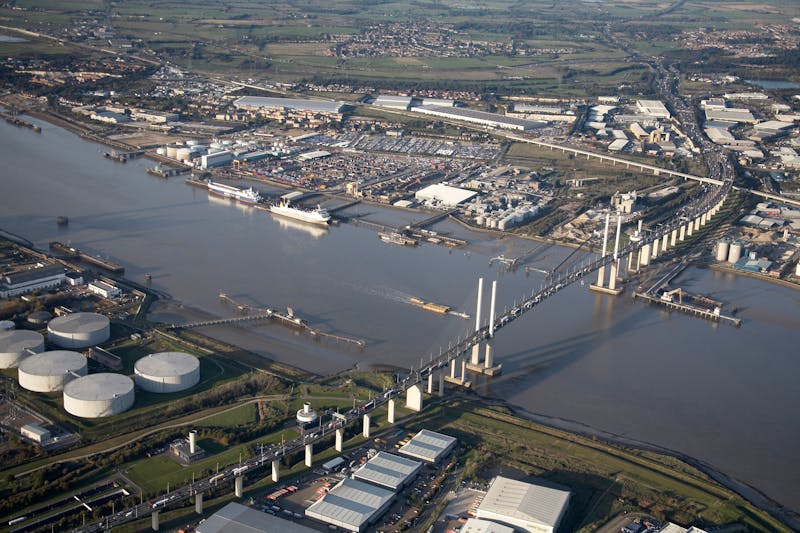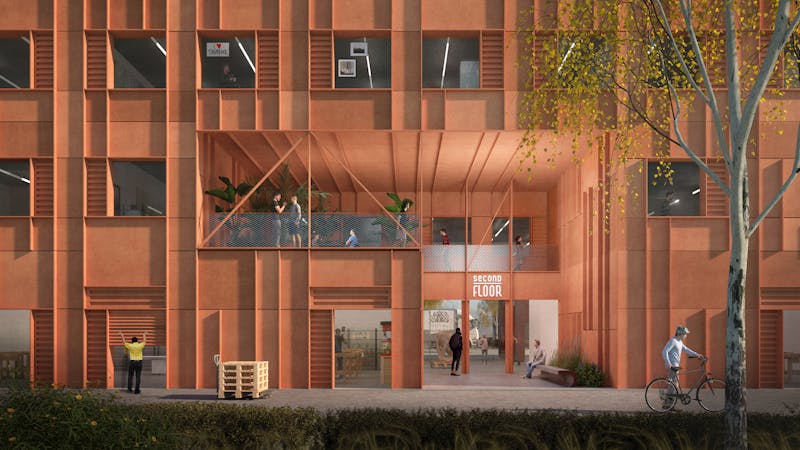
Creativity to change the world

Client: Thurrock Council and Second Floor Studios & Arts
On the map: Purfleet-on-Thames, London, UK
Values: Sustainability, culture, craftsmanship, community
Status: In progress
Showing that creativity can change the world was our studio's goal when we designed a space for makers and artists in Thurrock.
Britain's creative communities are under threat. The pandemic and rising rents have left many creatives on a financial cliff edge. The damaging impact on their work, personal lives and mental health is transparent. Chic creative quarters designed for tourists aren't the solution. Creatives need the long-term security of an affordable space to create and collide with like-minded people.
So, when we were invited to propose a new space for creatives in Thurrock, our goal was to put the makers and artists first. We imagined a living building whose optimistic spirit would inspire their artistic success for generations to come. In turn, they would become pioneers of urban regeneration - from their innovative use of the space to their ability to disrupt the local economy and culture-led planning.


To fulfil our vision, we're considering the needs of creatives at every stage of the design process. We want every detail and feature in the building to make it easier for them to make great art. Most important of all, we're determined to create a practical and flexible space makers and artists can afford to work from for decades to come.
We began by connecting the building to the historic lifeblood of the area, the River Thames. A focal point for industry and inspiration for artists such as JMW Turner, the famous river has shaped the fortunes of Thurrock and beyond. We wanted to channel its energy to kickstart a new era of artistic productivity. So we took inspiration from industrial architecture found along the Thames - historic warehouses, docks and piers that chronicle an earlier age of innovation and entrepreneurialism. Practical and robust yet well-proportioned and elegant, they're a celebration of human resourcefulness, innovation and 'making'.

Connecting to the past is one part of our approach. The new building is located in the High House Production Park - a creative zone that's home to world-class talents, including the Royal Opera House. We set out to create more meaningful connections between our makers and artists and their neighbours. To do this, we're designing the new space to be a gateway to the production park, a source of inspiration and talent for its neighbours, and a community hub where creatives from diverse disciplines can gather and ideas collide.
Central to our concept is the courtyard. Dynamic, colourful and hardworking, we want the yard to be a practical place for makers to create everything from sculpture and furniture to large-scale installations. Our ambition is for an ever-changing creative ecosystem where every day brings a new sight, sound and experience.
To enhance the sense of community within the building, we proposed connecting the yard with rooftop spaces and everything in between. The result will be a free-flowing space where people can float up and down levels, encountering different sights, sounds, people and ideas on their way.

Sustainability is another vital element of the new space. We want to create a BREEAM Outstanding, low-embodied carbon and low-energy use building. Our approach starts with simple passive components – a highly insulated façade and roof, double glazed windows and rooflights sized to give superb daylight to each studio. The building will include operable windows to allow artists to connect with the external environment and control their own space. However, to meet the stringent energy demands of BREEAM each studio will include a small MVHR unit to provide fresh air in winter with maximum heat recovery.
We are looking to deconstruct a steel frame from one site, fabricate the steelwork and reuse it to construct the new steel frame on this project. We believe the Artist and Maker Building could become a benchmark for this radical approach to sustainable construction - making reuse the norm for the entire industry.
Our vision of a space where creatives become pioneers of urban regeneration is rooted in sound economics. Each year the Arts and Culture sector contributes over £7.7 bn to the UK economy. It's also based on the simple truth that creative minds change the world. With the world facing major challenges, we need them more than ever. They deserve a space that inspires, nurtures and supports them to imagine a better future.

Image credits: Vis